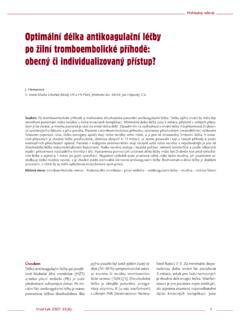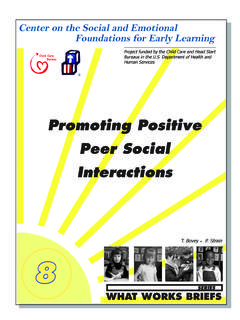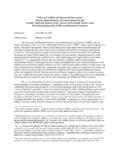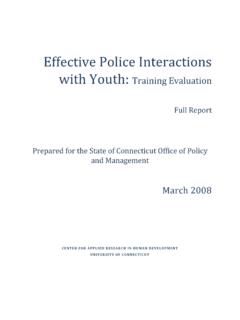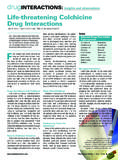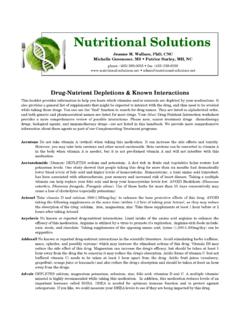Transcription of Warfarin and its interactions with foods, herbs and other ...
1 2006 Informa UK Ltd ISSN 1474-0338433 Cardiovascular & RenalWarfarin and its interactions with foods, herbs and other dietary supplementsEdith A Nutescu , Nancy L Shapiro, Sonia Ibrahim & Patricia West University of Illinois at Chicago, College of Pharmacy, Department of Pharmacy Practice, Chicago, IL 60612, USAD espite its complex pharmacokinetic and pharmacodynamic profile, warfarinis still one of the most widely used oral anticoagulant agents. Attaining opti-mal anticoagulation with this agent is clinically challenging in view of its manyfood and drug interactions .
2 Inappropriate anticoagulation control can exposepatients to an increased risk of bleeding or thromboembolic complications,due to over and underanticoagulation, respectively. Fluctuations in dietaryvitamin K intake can have a significant effect on the degree of anticoagula-tion in patients treated with Warfarin . In addition, the explosion in use of var-ious dietary supplements and herbal products can lead to undesired outcomeson anticoagulant levels. The aim of this review is to discuss the scope and thepotential clinical impact of the most commonly reported food , dietary supple-ment and herbal interactions with Warfarin therapy.
3 Practical steps forpatients and providers to minimise these interactions are : anticoagulation, dietary supplement, drug interaction, food interaction, herb, vitamin, warfarinExpert Opin. Drug Saf. (2006) 5(3):433-4511. IntroductionAnticoagulation is the mainstay of therapy for the prevention of thromboemboliccomplications in patients with atrial fibrillation, prosthetic heart valves, venousthromboembolism and coronary artery disease. For long-term chronic management,oral anticoagulation is preferred over the intravenous or subcutaneous routes due topatient convenience and cost [1].
4 Warfarin has been in clinical use for over six dec-ades and it is still one of the most widely used oral anticoagulant agents. The drug isa racemic mixture of S- and R-enantiomers, with the S-enantiomer being 2 5 timesmore active than the R-enantiomer. Warfarin exerts its effect by interfering with thecyclic interconversion of vitamin K and its 2,3 epoxide (vitamin K1 epoxide). Vita-min K is an essential cofactor for the postribosomal synthesis of the vitamin Kdependent clotting factors II, VII, IX and X, which require -carboxylation for theirprocoagulant activity, as do the anticoagulant proteins C and S, as well as protein with Warfarin results in the hepatic production of partially carboxylatedand decarboxylated proteins with reduced anticoagulant activity.
5 The anticoagulanteffect of Warfarin can be reversed by the intake of vitamin K1 (phytonadione) [1-3]. Warfarin is metabolised in the liver by the cytochrome P450 (CYP) system toinactive hydroxylated metabolites (major pathway) and by reductases to reducedmetabolites ( Warfarin alcohols) with little anticoagulant activity. The CYP isozymesinvolved in the metabolism of Warfarin include 2C9, 2C19, 2C8, 2C18, 1A2 and3A4. The 2C8/9 isozyme is primarily responsible for the metabolism of the S-enan-tiomer to 7-hydroxywarfarin and 6-hydroxywarfarin (major pathway), whereas the3A4 isozyme is primarily responsible for the metabolism of the R-enantiomer to1.
6 Introduction2. interactions of Warfarin and dietary vitamin K3. interactions of Warfarin and other dietary supplements, herbs and vitamins4. Clinical and patient care considerations5. Conclusion6. Expert opinionTo comment on this article please and its interactions with foods, herbs and other dietary supplements434 Expert Opin. Drug Saf. (2006) 5(3)10-hydroxywarfarin and 4 -hydroxywarfarin (minor pathway). Warfarin has a narrow therapeutic index. A patient s interna-tional normalised ratio (INR) should be monitored frequentlyto maintain values within the desired therapeutic INRrange[1-3].
7 Dosing of Warfarin is highly variable among patientsand must be individualised. Average doses are around5 mg/day, but may be as low as mg/day in some patients, orup to 50 mg/day in others. Factors such as age, gender, ethnic-ity, indication for anticoagulation, vitamin K intake, bodyweight, albumin level and interacting medication(s) can allcontribute to this variability [1,3]. More recently, single nucle-otide polymorphisms in CYP 2C9 [4-5] and vitamin K epoxidereductase (VKOR) [6] have been shown to correlate with thedose of Warfarin required for effective are numerous mechanisms by which Warfarin inter-acts with other medications.
8 Absorption of Warfarin may beinhibited by drugs that affect the bioavailability of Warfarin ,such as colestyramine or sucralfate. Due to its high proteinbinding, Warfarin also interacts with medications that arehighly protein-bound ( , salsalate, sulfasalazine). Dis-placement of either drug can occur and, although it is usu-ally transient, may cause significant temporary increases inINR requiring dose reduction and close monitoring. Warfa-rin is inhibited by medications that induce cytochromeP450 liver enzymes ( , as rifampin, carbamazepine) andenhanced by medications that inhibit CYP liver enzymes( , metronidazole, cimetidine).
9 Because CYP 2C9 is themost important isoenzyme in the metabolism of S- Warfarin ,potent inhibitors or inducers of this enzyme result in signifi-cant effects on Warfarin . Pharmacodynamic interactions mayoccur with medications that affect platelet function andaggregation, causing increased risk of bleeding ( , aspirin,clopidogrel, NSAIDs). Warfarin also interacts with manyfoods, vitamins, and herbal supplements via some of thesesame mechanisms [7].Complementary and alternative medications (CAMs) aredefined by the National Center for Complementary and Alter-native Medicine as practices and products that are not cur-rently considered to be part of conventional include relaxation techniques, herbal medicines,energy healing, hypnosis and acupuncture.
10 The 1994 DietarySupplement Health and Education Act (DSHEA) allowsherbal products to be marketed as dietary supplements in theUS [8]. Manufacturers of herbal products can market theseproducts without submitting safety or efficacy data to theFDA. Although these products can not claim to diagnose,cure, treat or prevent specific diseases, manufacturers areallowed to include statements about the effects of the supple-ment on the structure or function of the body or on theimprovement in well-being that the product would regarding interactions with prescription andover-the-counter medications or adverse effects are notrequired to be included on the product label.

